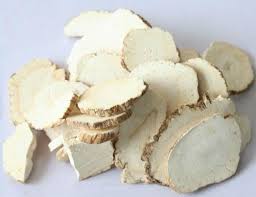Analgesic.[3]. Antibiotic.[3]
Strengthens the body when there are nervous disorders, increases blood pressure
(by activating the brain, nervous system, respiratory system and arteries).
[1] A Complete English Dictionary of Medicinal
Terms in Chinese Acupuncture and Herbalism 1981- Henry Lu Chinese Foundations
of Natural Health- The Academy of Oriental Heritage, Vancouver, Canada.
[2] The Chinese Materia Medica A practical English- Chinese Library of Traditional
Chinese Medicine Publishing House of Shanghai University of Traditional Chinese
Medicine. Director Hu Ximing ISBN 7-81010-111-X/R-110
[3] Translation notes from Gary Seiford and Hocu Huhn- NSW College of Natural
Therapies. Sydney Australia (1982).
[4] Chinese Herbal Medicine Materia Medica- Dan Bensky and Andrew Gamble- Eastland
Press 1986 Seattle Washington ISBN 0-939616-15-7
Images
1.
innerpath.com.au
2.
sinofoods.en.alibaba.com
byak-angelicin, byak-angelicol, oxypeucedanin, imperatorin, isoimperatorin, phellopterin,
angelic acid, angelicotoxin, anthotoxin, marmesin, scopoletin, isobyakangelicol,
neobyakangelicol.[1]
References
[1] Chinese Herbal Medicine Materia Medica- Dan Bensky and Andrew Gamble- Eastland
Press 1986 Seattle Washington ISBN 0-939616-15-7
 Angelica dahurica.
白
芷 Bái zhĭ
Angelica
Family: Umbelliferae
Angelica dahurica.
白
芷 Bái zhĭ
Angelica
Family: Umbelliferae
